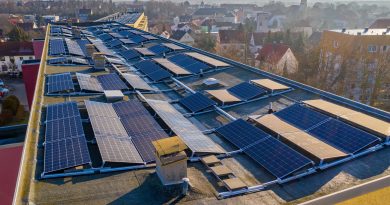How Many kWh Can Solar Panels Generate?
Estimating the energy production of solar panels is essential for understanding how much electricity your solar energy system can generate. This blog explores the various factors that influence solar panel output, including panel wattage, sunlight intensity, system location, and weather conditions. We’ll also provide calculations and examples to help you estimate daily, monthly, and annual electricity generation. Additionally, we’ll discuss how solar energy potential varies across different regions.
Table of Contents
- 1 Understanding Solar Panel Wattage and Energy Production
- 1.1 Factors Affecting Solar Energy Output
- 1.2 Factors Influencing Solar Panel Energy Production
- 1.3 Calculating Energy Generation Based on Peak Sun Hours
- 1.4 Estimating Electricity Production for Different Seasons
- 1.5 The Role of Energy Storage in Maximizing Solar Utilization
- 1.6 Comparing System Output to Average Household Consumption
- 1.7 Tools and Software for Estimating Solar Energy Generation
- 1.8 The Impact of Panel Orientation and Tilt on Energy Production
- 1.9 Real-World Factors Affecting Solar Panel Performance
- 1.10 Optimizing Solar Panel Systems for Maximum Energy Yield
- 1.11 Conclusion
- 1.12 FAQ Section
Understanding Solar Panel Wattage and Energy Production
Solar Panel Wattage:
- Definition: Wattage is the measure of a solar panel’s power output under standard test conditions (STC). It indicates the maximum power a panel can produce, typically measured in watts (W).
- Example: A 300W solar panel can generate 300 watts of power per hour under optimal conditions.
Energy Production:
- Conversion: The amount of electricity a solar panel generates is measured in kilowatt-hours (kWh), which is the standard unit for electricity consumption.
- Example: A 300W panel producing power for 5 hours would generate 1.5 kWh of electricity.
Factors Affecting Solar Energy Output
Sunlight Intensity:
- Solar Irradiance: The amount of sunlight reaching the solar panel directly influences energy output. This varies by location, time of year, and time of day.
Temperature:
- Temperature Coefficient: Solar panels typically lose efficiency as temperatures rise. The temperature coefficient indicates how much power output decreases for each degree Celsius above 25°C.
Shading:
- Impact of Shading: Even partial shading can significantly reduce a panel’s power output by blocking sunlight from reaching the cells.
Factors Influencing Solar Panel Energy Production
| Factor | Impact on Energy Production | Explanation |
|---|---|---|
| Panel Wattage | Determines potential energy production | Higher wattage panels generate more electricity under optimal conditions |
| Sunlight Intensity | Directly proportional to energy output | More sunlight = higher output; varies by location and weather |
| Temperature | Inversely affects energy output | Higher temperatures reduce efficiency and output |
| Shading | Significantly reduces energy output | Even partial shading can drastically cut energy production |
| Panel Orientation & Tilt | Optimizes sunlight exposure | Proper orientation and tilt maximize energy yield |
| Location | Geographic factors affecting sunlight hours | Locations with more sunlight require fewer panels |
Calculating Energy Generation Based on Peak Sun Hours
Basic Calculation:
- Formula: Energy (kWh)=Panel Wattage (kW)×Peak Sun Hours (h)×Days
- Example: For a 300W (0.3 kW) solar panel in an area with 5 peak sunlight hours per day:
- Daily Energy Production: 0.3 kW×5 h/day=1.5 kWh/day
- Monthly Energy Production: 1.5 kWh/day×30 days=45 kWh/month
- Annual Energy Production: 1.5 kWh/day×365 days=547.5 kWh/year
Estimating Electricity Production for Different Seasons
Seasonal Variations:
- Winter vs. Summer: In winter, shorter daylight hours and lower sun angles reduce energy production, while in summer, longer days and higher sun angles increase it.
- Adjustment: Use different peak sunlight hours for each season to get more accurate estimates.
Example:
- If peak sunlight hours drop to 3 hours in winter:
- Winter Daily Production: 0.3 kW×3 h/day=0.9 kWh/day
- Winter Monthly Production: 0.9 kWh/day×30 days=27 kWh/month
The Role of Energy Storage in Maximizing Solar Utilization
Batteries and Storage:
- Storing Excess Energy: Batteries store excess energy produced during peak sunlight hours for use at night or during cloudy periods.
- Impact: Properly sized batteries can help ensure that all generated energy is utilized, reducing dependence on the grid.
Comparing System Output to Average Household Consumption
Energy Needs:
- Average Household Consumption: A typical household might use 30 kWh/day. To meet this demand, calculate the number of panels required based on your location’s peak sunlight hours.
Example Calculation:
- If the household uses 30 kWh/day and you have 5 peak sunlight hours:
- Number of Panels: 30 kWh/day1.5 kWh/day per panel=20 panels
Tools and Software for Estimating Solar Energy Generation
- Online Tools: Websites like SolarClue provide tools to calculate solar energy production based on location, system size, and other factors.
The Impact of Panel Orientation and Tilt on Energy Production
Orientation:
- South-Facing Panels: In the northern hemisphere, panels should face south to capture the most sunlight throughout the day.
Tilt Angle:
- Optimal Tilt: The angle of the panels should match the latitude of the installation location to maximize exposure to the sun.
Example:
- In a location at 40° latitude, a 40° tilt angle would typically be ideal.
Real-World Factors Affecting Solar Panel Performance
Weather Conditions:
- Cloud Cover: Frequent cloudy days reduce the amount of sunlight reaching the panels, decreasing energy output.
- Temperature: High temperatures can reduce panel efficiency, while cold, sunny days can increase output.
System Maintenance:
- Cleaning and Upkeep: Dirt, dust, and debris on the panels can block sunlight, reducing energy production. Regular cleaning helps maintain optimal performance.
Optimizing Solar Panel Systems for Maximum Energy Yield
System Design:
- Panel Placement: Avoid shading and place panels in the optimal orientation and tilt to maximize sunlight exposure.
- Inverter Sizing: Use an appropriately sized inverter to ensure efficient energy conversion from DC to AC power.
Regular Monitoring:
- Performance Tracking: Monitoring systems can help track energy production, identify issues, and optimize system performance over time.
Conclusion
Estimating the energy production of solar panels involves understanding the various factors that affect output, from sunlight intensity to system location and weather conditions. By using accurate calculations, optimizing system design, and considering seasonal variations, you can effectively plan and maximize the energy yield of your solar panel system. This comprehensive guide provides the tools and knowledge needed to make informed decisions and achieve the best possible performance from your solar energy investment.
Here at SolarClue®, we offer a smart, practical, and “beautiful” solution. You will be answered for all the questions related to Solar.
We provide all kinds of brands that are the Best Solar panels in India.
If you are the one who is planning for the solar power system. Don’t hesitate to contact our team!
Looking forward to empowering you with solar energy, just like hundreds of our other clients!
FAQ Section
1. How do I calculate the energy production of my solar panels?
Use the formula: Energy (kWh)=Panel Wattage (kW)×Peak Sun Hours (h)×Days.
This will give you an estimate of daily, monthly, and annual energy production.
2. What factors affect the energy output of solar panels?
Key factors include panel wattage, sunlight intensity, temperature, shading, panel orientation, and tilt.
3. How does location impact solar energy production?
Locations with more peak sunlight hours, typically found closer to the equator, will generate more energy. Seasonal variations also affect energy output.
4. Can batteries help maximize the use of solar energy?
Yes, batteries store excess energy generated during peak sunlight hours, allowing you to use solar power at night or during cloudy days.
5. How can I optimize my solar panel system for maximum energy yield?
Optimize panel placement and orientation, ensure regular maintenance, and use an appropriately sized inverter to maximize energy production.




